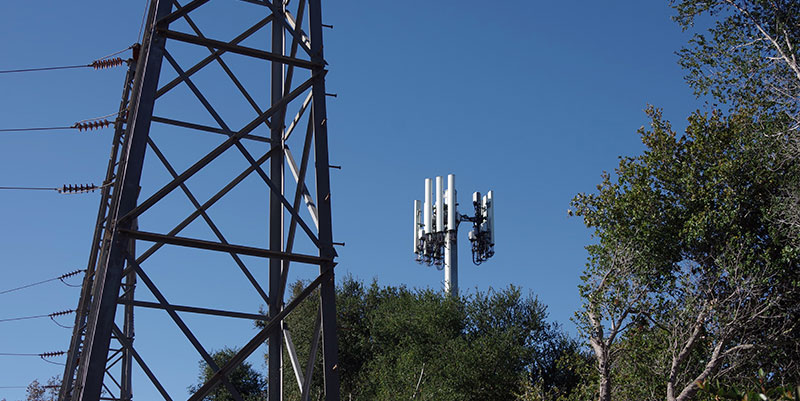Wireless Tools to Secure Your School Data and Communications
Connected education continues to expand, providing students innovative and immersive environments for learning that also pose new digital security challenges.
For example, your educational institute’s digital footprint includes increasingly vast amounts of sensitive information that is shared back and forth between student and staff devices to support learning, communication and administrative tasks. But this transfer of data also makes schools vulnerable to cyber threats. That’s why you need to protect your schools, students and teachers through the right filters and safety measures suitable for the education sector.
Wireless technology can help you modernize your digital infrastructure and mitigate the risks posed by cybercriminals.

The Increasing Challenges to Safeguarding Data
According to the U.S. Department of Labor, Personal Identifiable Information (PII) refers to “any representation of information that permits the identity of an individual to whom the information applies to be reasonably inferred by either direct or indirect means.”1
K-12 educational institutions maintain PII such as names, addresses, social security numbers and health records of students and staff. Breaches in digital security can lead to malicious online activity that can also severely impact the institution's reputation and create a crisis that may be hard to contain. In addition, educational institutions are subject to various laws and regulations that protect children’s rights and privacy online. They face severe consequences when this is breached.
Students, teachers and staff may not even be aware of the risks involved in using technology or the importance of digital security. This lack of awareness can lead to careless behavior, such as sharing passwords or clicking on suspicious links opening up the systems to malicious software attacks.
The threat is increasing worldwide. Ransomware attacks targeting the education sector have risen sharply. Globally, 56% of K-12 schools and 64% of colleges and universities reported being hit by an attack in 2021, according to an independent survey.2 More recently, the U.S. education industry experienced a 17% increase in attacks from Q4 2022 to Q1 2023, according to a survey released in April 2023.3
Protecting Yourself from Cyber Threats
School districts recognize the importance of secure, reliable and controlled internet access to keep students safe from harmful content and focused on learning off campus. K-12 schools can provide education and training to students, teachers and staff about the importance of digital security and how to stay safe online.
Look to your wireless carrier for advanced, secure, fully kitted and ready-to-deploy hardware, along with flexible data bundles providing CIPA-compliant web filters, mobile device management and managed detection and response.
Children’s Internet Protection Act (CIPA) — CIPA-compliant web filters restrict access to inappropriate content or websites and keep the connected system safe for students to use.
Mobile Device Management (MDM) — MDM software monitors, manages and secures data and applications on school-owned devices. It helps limit app, device and web access with kiosk mode. MDM also eliminates the need for your IT team to manually provision, update and troubleshoot mobile devices.
Managed Detection and Response (MDR) — MDR for Mobile helps protect users by quickly identifying a range of cybersecurity risks including phishing attempts, man-in-the middle attacks, rogue access point connections, non-approved configuration changes and more. It triggers on-device warnings and, if needed, deploys on-device control mechanisms to mitigate risks.
Additional Tools
Tools that engage with your wireless devices include:
Tracking Systems — A wireless carrier can help track and monitor school assets and send real-time alerts when there is an incident. Investing in and implementing tracking systems can promote safety, lead to better preparedness and keep the focus on education.
Wireless Cameras — Wireless cameras eliminate the need for costly and time-consuming hard-wiring and allow for easy security backup. View security video and receive remote alerts on your smart devices to monitor your surroundings in real time.
Priority Services — Educators and school personnel need reliable communication especially when an emergency adds to network congestion. Priority services ensure that their emergency communication is prioritized over other traffic, so their calls and data get through quickly.
UScellular brings you cybersecurity expertise customized for education. We help K-12 schools adopt and implement best practices in digital security that provide a safer environment to students and staff and keep the education environment stable. We also work with an exclusive list of partners to provide you the full resources you need to thwart cyberattacks—all powered by a reliable and nationwide wireless network.
To learn more about securing your communications, contact your local UScellular Government expert at 866-616-5587 or visit our website to learn more about education security solutions.
References
- Guidance on the Protection of Personal Identifiable Information | U.S. Department of Labor
- The State of Ransomware in Education 2022 (PDF) | Sophos
- GRIT Ransomware Report – Q1 | GuidePoint Security





